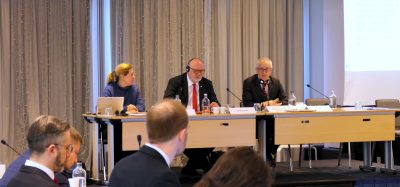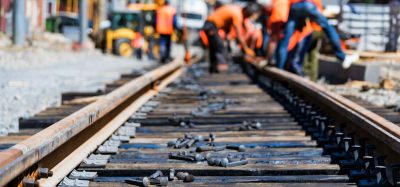MoU signed between RailNetEurope and Europe’s Rail Joint Undertaking
Posted: 1 June 2023 | Elliot Robinson (Editorial Assistant - Global Railway Review) | No comments yet
EU-RAIL and RNE signed the MoU to formalise their commitment to foster an integrated, high-capacity European railway network by eliminating barriers to interoperability.
Europe’s Rail Joint Undertaking (EU-RAIL) and RailNetEurope (RNE) signed a Memorandum of Understanding (MoU) in Stockholm, Sweden on 30 May 2023. The MoU aims to formalise the collaboration between RailNetEurope and the Europe’s Rail Joint Undertaking.
Through this agreement, both organisations are now committed to foster an integrated, high-capacity European railway network by eliminating barriers to interoperability and building upon a harmonised functional system architecture shared by the sector. The collaboration facilitated by this MoU will cover traffic management and capacity allocation, exchange and communication of railway related data, infrastructure and services, aiming to achieve higher railway sector efficiency, faster uptake and deployment of projects and innovations and leverage the huge potential of digitalisation and automation to reduce rail’s costs, increase its capacity and enhance its flexibility and reliability.
The objective of the MoU is to ensure knowledge exchange and collaboration in the following areas crucial for the European railway sector:
- EU-Rail System Pillar, following the mandate to develop a unified operational concept and a functional, safe and secure system architecture, as well as cooperation with the EU-Rail Flagship Areas, more specifically FA1 Network management planning and control and Mobility and FA5 Sustainable Competitive Digital Green Rail Freight Services
- Research and development of innovative solutions, including providing the necessary experience and sector engagement and ensuring that the concepts and designed solutions are interoperable and that legacy solutions can be migrated according to a clear migration strategy
- Ongoing sector initiatives in which also EU-Rail Members and RNE are involved, specifically digital infrastructure information, timetable redesign, digital capacity management, digital train information, including tracking and tracing, traffic management and IT architecture, among other topics.
Related content you will enjoy:
Europe’s Rail launch Call for Expressions of Interest for new scientific advisory body
“This is very welcome cooperation, which will help Europe’s Rail deliver on key milestones on our way to a digital, interoperable EU rail sector,” Maja Bakran, Acting Director-General at the European Commission, said. “The contribution of infrastructure managers is crucial here, and I look forward to experiencing the innovative solutions that will result from this collaboration.”
“The cooperation between RNE and Europe’s Rail is a further step in bringing key players in the European rail sector closer together,” Joachim Kroll, Secretary General at RailNetEurope, said. “The Memorandum of Understanding will allow Infrastructure Managers to better share their expertise and ongoing activities with Europe’s Rail through RNE. We believe that this will be of great benefit to both sides, especially in the areas of infrastructure capacity management, traffic management and digitalisation, and ultimately result in a more efficient, attractive and accessible European railway system. In addition, key European projects launched and organised through RNE, such as TTR/DCM (Timetable Redesign / Digital Capacity Management) or concepts for European traffic management, can be included in the JU strategy.”
“This Memorandum of Understanding is important to Europe’s Rail as it creates an opportunity to collaborate on deeper level on topics related to infrastructure capacity allocation and rail traffic management, to foster crucial aspects of rail system transformation,” Giorgio Travaini, Executive Director a.i. at Europe’s Rail Joint Undertaking, said. “Europe’s Rail work, with its Members and partners, creates an interoperable system in Europe that more efficiently uses the existing infrastructure resources and creates the additional flexibility that contributes to making rail operation between the Member States much easier. Those are essential elements toward the achievement of the Single European Railway Area and to meet the demands of the final customers.”






